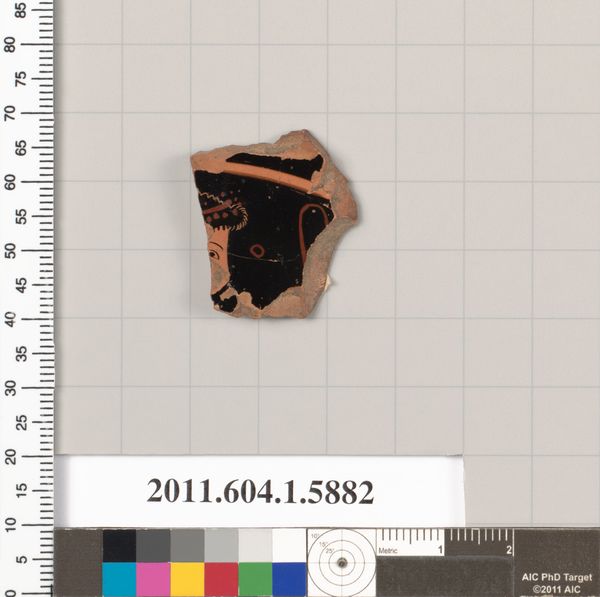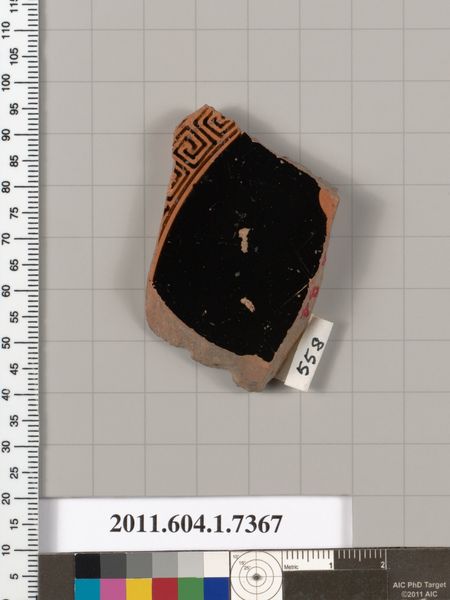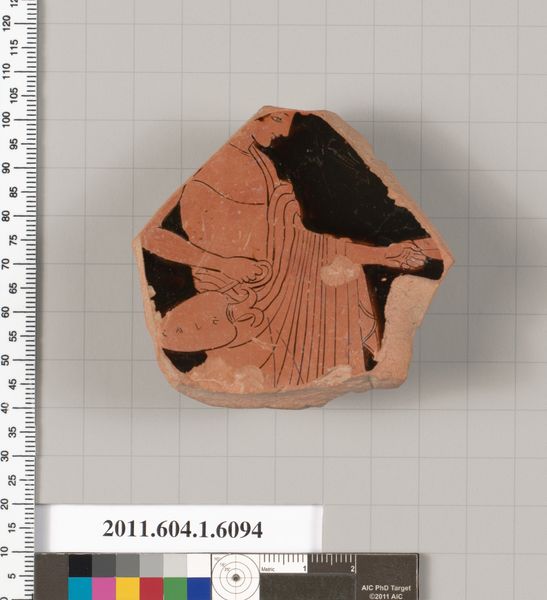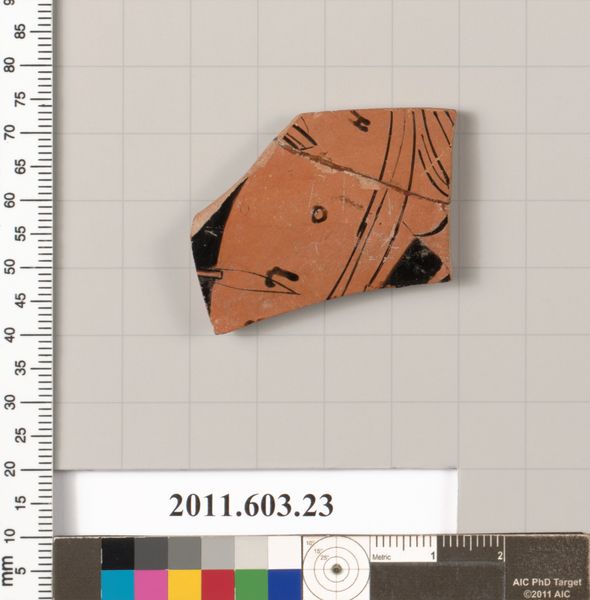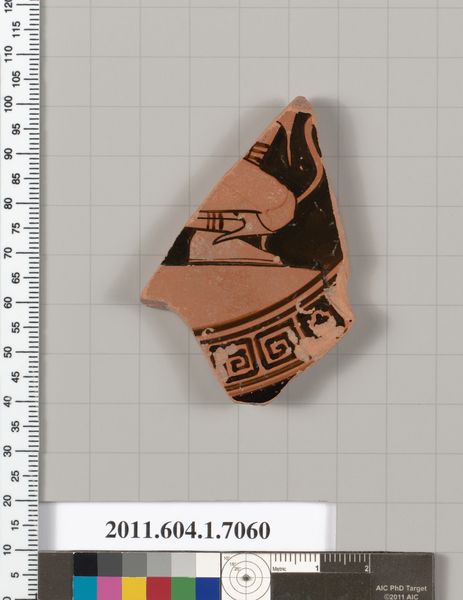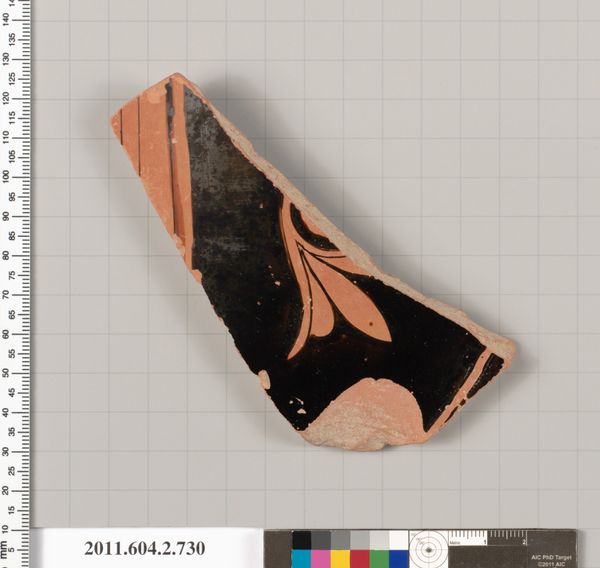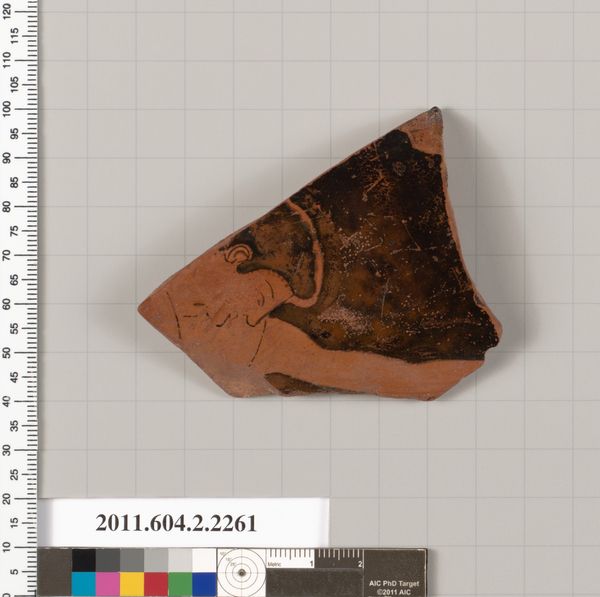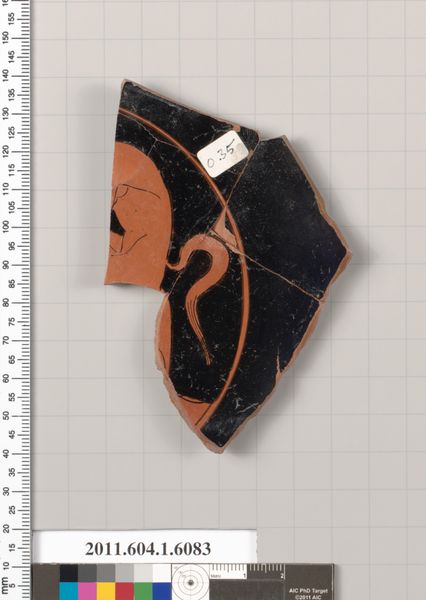
Terracotta rim fragment of a kylix: eye-cup (drinking cup) 600 BC
0:00
0:00
ceramic
#
greek-and-roman-art
#
ceramic
#
vase
#
figuration
#
roman-art
#
geometric
#
ancient-mediterranean
#
history-painting
Copyright: Public Domain
Editor: This is a fragment of a terracotta kylix, a drinking cup, from around 600 BC, by Psiax. It's striking, isn't it? Even though it's just a piece, the image of the archer still feels so powerful. How do you interpret this work? Curator: This fragment speaks volumes about the cultural memory embedded in these images. The archer, a recurring figure in Greek art, represents more than just a warrior. Consider the cultural weight carried by such imagery: skill, precision, and even divine connection. Arrows weren't merely projectiles; they were instruments of fate. Editor: That’s fascinating! So the archer isn't just about battle? Curator: Precisely! The act of archery, depicted repeatedly across millennia, can be seen as a metaphor for focused intent, purpose, and hitting the mark in life. Also, look closely at the geometric designs. What do they evoke in you? Editor: I see a repeated triangle pattern below the archer...maybe a connection to formalized notions of warfare at that time? Or are they more decorative? Curator: Potentially both. These motifs link us back to the ancient world, reminding us of the symbolic language that was deeply understood. We are deciphering visual codes of a distant past. Editor: It's amazing how much information is packed into such a small piece. Curator: Indeed. It is a tangible connection to a bygone era, offering glimpses into their beliefs, values, and their symbolic universe. The fragment allows us to complete the story with our imagination. Editor: This has given me a totally new perspective on ancient art. I will look at these pieces more as artifacts imbued with shared symbolism! Curator: Excellent! The power of visual language lies in its enduring ability to resonate across time and cultures.
Comments
No comments
Be the first to comment and join the conversation on the ultimate creative platform.


